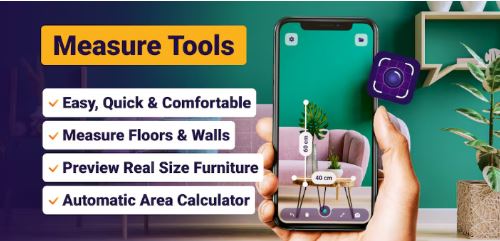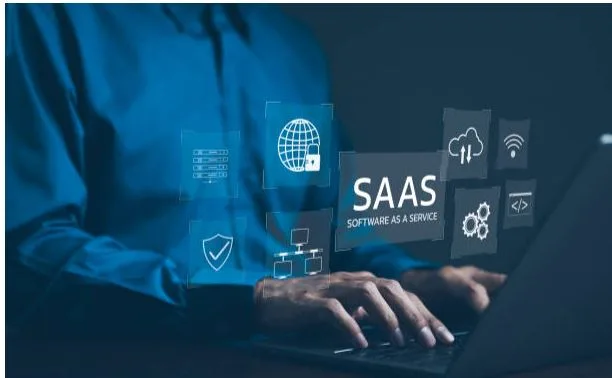Latest Tech Innovations Shaping Everyday Life
In today’s fast-paced digital age, technological innovation is not just a buzzword, it’s an ever-present force shaping how we live, work, and connect. From the devices we carry in our pockets to the infrastructure that powers our cities, tech advancements are seamlessly blending into our daily routines, often in ways we barely notice. But behind that seamlessness lies incredible engineering, creativity, and disruption.
Tools like WinBuzzer Prompt Station, a Chrome extension designed for prompt chain automation across ChatGPT, Gemini, Claude, and other chatbots, highlight how AI, software, and hardware innovations are rapidly transforming how we live and work, offering valuable insights into the evolution of modern technology.
This article explores the latest tech innovations that are redefining everyday life in 2025 and beyond.
- Artificial Intelligence in Daily Life
AI is no longer confined to labs or sci-fi movies. It’s embedded in our phones, homes, and even cars. Voice assistants like Siri, Google Assistant, and Alexa have become virtual companions, managing calendars, playing music, and controlling smart home devices with simple voice commands.
More advanced forms of AI, such as generative AI, are transforming how we create content, design products, and interact online. Tools like ChatGPT and AI image generators are helping writers, marketers, educators, and designers work faster and more creatively.
AI is also enhancing personalization in real-time. Whether it’s suggesting what to watch next on Netflix, recommending what to buy on Amazon, or customizing your fitness routine through apps, AI is quietly tailoring experiences to individual preferences.
- Wearable Health Tech and Biometric Monitoring
Health tech has seen an enormous leap with wearable devices now functioning like mini diagnostic labs. Smartwatches and fitness bands track heart rate, sleep patterns, blood oxygen levels, and more. The latest models even feature ECG functionality and stress monitoring, allowing users to detect irregularities before they become serious issues.
But innovation doesn’t stop there. In 2025, smart rings and skin patches are emerging as compact alternatives to traditional wearables. They monitor hydration, glucose levels (for diabetics), or even body temperature in real time. This is enabling more proactive and preventive healthcare, and for those with chronic illnesses, it offers peace of mind and autonomy.
- Smart Homes Get Smarter
Smart home technology is evolving from novelty to necessity. Today’s smart homes aren’t just about turning off the lights or setting the thermostat remotely they’re becoming fully integrated ecosystems.
Thanks to platforms like Matter and improvements in device compatibility, homeowners can now connect devices from different brands seamlessly. Smart fridges that suggest recipes based on what’s inside, AI-powered security cameras with facial recognition, and adaptive lighting systems that mimic natural sunlight patterns are making homes more comfortable and efficient.
Voice control and automation are central to the smart home revolution. You can walk into a room, say “Movie time,” and instantly have the lights dim, curtains draw, and the TV turn on without lifting a finger.
- Electric Vehicles and Autonomous Driving
Transportation is undergoing a significant transformation thanks to innovations in electric vehicles (EVs) and autonomous driving technology. EVs are no longer niche; they’re mainstream. Companies like Tesla, Rivian, and even traditional automakers like Ford and GM are offering competitive electric models with impressive range and performance.
At the same time, self-driving car technology is inching closer to everyday reality. While fully autonomous cars aren’t yet widespread, features like advanced driver-assist systems (ADAS), lane-centering, and adaptive cruise control are becoming standard.
Moreover, vehicle-to-infrastructure (V2I) communication is in development, which means cars could soon talk to traffic lights, construction zones, or other vehicles to make driving safer and more efficient.
- Augmented Reality (AR) and Virtual Reality (VR)
AR and VR have long been associated with gaming, but the real-world applications are expanding rapidly. Augmented reality is now enhancing education, retail, and even workplace training. For instance, AR overlays can help medical students visualize anatomy or guide technicians through complex machinery repairs.
On the consumer side, AR is revolutionizing shopping letting users “try on” clothes or see how furniture fits in their home using just their smartphone. Apple’s Vision Pro and Meta’s Quest headsets are also pushing mixed reality into the mainstream, blending digital elements into the physical world.
Virtual reality is creating immersive worlds for entertainment, therapy, and collaboration. From virtual meetings in 3D environments to therapeutic VR sessions for PTSD, the potential of this technology is far-reaching.
- 5G and the Rise of Hyperconnectivity
The global rollout of 5G is accelerating how fast devices communicate. It’s not just about faster mobile browsing 5G enables the Internet of Things (IoT) to thrive. With ultra-low latency and higher bandwidth, it supports everything from real-time remote surgeries to smart traffic systems.
For everyday consumers, 5G means faster streaming, better video calls, and smoother gaming experiences. But beyond that, it paves the way for connected cities where everything from streetlights to parking meters is interconnected, adaptive, and optimized.
- Green Tech and Sustainable Innovation
Climate change is driving innovation in green technologies. Solar panels are getting more efficient and affordable, while smart energy management systems are helping households and businesses monitor and reduce energy usage.
In addition, tech startups are pioneering carbon capture, biodegradable materials, and lab-grown meat all efforts to create a more sustainable future. Innovations in battery storage and energy grids are also making renewable energy more reliable, ensuring that sustainability doesn’t come at the cost of convenience.
Even consumer electronics are going green. Companies are designing devices with recyclable materials, repairable parts, and longer lifespans to reduce e-waste.
- Digital Payments and Decentralized Finance (DeFi)
Carrying cash is becoming increasingly rare, with mobile wallets, contactless cards, and QR payments becoming the norm. Services like Apple Pay, Google Wallet, and various fintech apps have made digital transactions frictionless.
Meanwhile, blockchain-based technologies are slowly reshaping finance. While cryptocurrencies still face volatility, decentralized finance platforms are offering alternative ways to lend, borrow, and earn interest without traditional banks. Central Bank Digital Currencies (CBDCs) are also under development in many countries, promising more secure and efficient money transfers.
- Robotics and Automation in Everyday Tasks
Robotics is no longer just about industrial applications. Consumer-level robots are becoming more capable and affordable. Robotic vacuum cleaners and lawn mowers are saving time at home, while warehouse and delivery bots are transforming how goods move.
In restaurants and cafes, robots are preparing food, mixing drinks, and even delivering meals. Automation is enhancing convenience and efficiency in hospitality, logistics, and healthcare though it also raises important questions about the future of work.
- Personalized Learning and EdTech
Education has undergone a digital revolution. Personalized learning platforms powered by AI adapt lessons to a student’s learning style and pace. Whether you’re studying math, learning a language, or preparing for a certification, these platforms provide customized paths to success.
Tools like virtual tutors, immersive learning through VR, and gamified content are keeping students engaged and motivated. Meanwhile, lifelong learning has become easier than ever thanks to microlearning platforms, MOOCs, and skill-sharing apps.
Final Thoughts
The pace of technological advancement shows no signs of slowing. From smart homes and AI to wearable health tech and green innovation, these breakthroughs are not just transforming industries they’re reshaping the very fabric of our daily lives.
As we embrace these innovations, it’s important to consider not just convenience and efficiency, but also ethics, privacy, and sustainability. The future isn’t just being built by engineers and scientists it’s being shaped by how we choose to use these technologies in our everyday decisions.
One thing is certain: the future is here, and it’s smarter, faster, and more connected than ever before.





